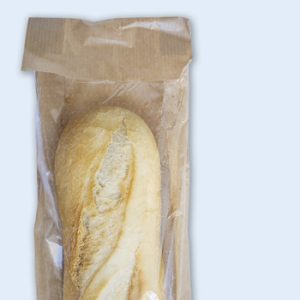
More evidence that low-calorie sweeteners are bad for your health
Studies show that artificial sweeteners can raise the risk of hypertension, metabolic syndrome, type 2 diabetes and heart disease, including stroke.

Natural Health News — A food ingredient widely used in baked goods, animal feeds and artificial flavourings, appears to increase levels of several hormones that are associated with risk of obesity and diabetes, according to new research.
The ingredient of concern is calcium propionate (also known as E282) which is added to ready-made foods to which prevent mold growth. Propionate (propionic acid) is a naturally occurring short-chain fatty acid found in butter and some types of cheese, but calcium propionate, used in food production, is a synthetic ingredient.
An international team of researchers led by Harvard TH Chan School of Public Health combined data from a randomized placebo-controlled trial in humans with results from mouse studies. Results showed that in humans consuming calcium propionate can trigger a cascade of metabolic events that leads to insulin resistance and hyperinsulinemia. Insulin resistance is when the body doesn’t respond well to the hormone insulin, which helps cells take in sugar, or glucose. Such resistance can lead to the high blood sugar levels seen in people with diabetes.
The study is published in the online journal Science Translational Medicine.
“Understanding how ingredients in food affect the body’s metabolism at the molecular and cellular level could help us develop simple but effective measures to tackle the dual epidemics of obesity and diabetes,” said Gökhan S. Hotamışlıgil, James Stevens Simmons Professor of Genetics and Metabolism and Director of the Sabri Ülker Center for Metabolic Research at Harvard Chan School.
More than 400 million people worldwide suffer from diabetes, and the rate of diabetes incidence is projected to increase 40% by 2040 despite extensive efforts to curb the disease. The surging rates of diabetes, as well as obesity, in the last 50 years indicate that environmental and dietary factors must be influencing the growth of this epidemic.
Researchers have suggested that dietary components including ingredients used for preparation or preservation of food may be a contributing factor, but there is little research evaluating these molecules.
Study details
For this study, the researchers first administered calcium propionate to mice and found that it rapidly activated the sympathetic nervous system, which led to a surge in hormones, including glucagon, norepinephrine, and a newly discovered gluconeogenic hormone called fatty acid-binding protein 4 (FABP4). This in turn led the mice to produce more glucose from their liver cells, leading to hyperglycemia – a defining trait of diabetes. Moreover, the researchers found that chronic treatment of mice with a dose of calcium propionate that was equivalent to the amount typically consumed by humans led to significant weight gain in the mice, as well as insulin resistance.
To determine how the findings in mice may translate to humans, the researchers established a double-blinded placebo-controlled study that included 14 healthy participants.
The participants were randomized into two groups: One group received a meal that contained one gram of calcium propionate as an additive and the other group was given a meal that contained a placebo. Blood samples were collected before the meal, within 15 minutes of eating the meal, and every 30 minutes thereafter for four hours.
A metabolic disrupter
The findings are concerning given how widely calcium propionate is used in foods.
The researchers found that people who consumed the meal containing calcium propionate had significant increases in norepinephrine as well as increases in glucagon and FABP4 soon after eating the meal.
The findings indicate that calcium propionate may act as a “metabolic disruptor” that potentially increases the risk for diabetes and obesity in humans. The researchers noted that while calcium propionate is generally recognized as safe (GRAS) by the US Food and Drug Administration, these new findings warrant further investigation into calcium propionate and potential alternatives that could be used in food preparation.
“The dramatic increase in the incidence of obesity and diabetes over the past 50 years suggests the involvement of contributing environmental and dietary factors. One such factor that warrants attention is the ingredients in common foods. We are exposed to hundreds of these chemicals on a daily basis, and most have not been tested in detail for their potential long-term metabolic effects,” said Amir Tirosh, associate professor of medicine at Tel-Aviv University’s Sackler School of Medicine, director of the Division of Endocrinology at Sheba Medical Center in Israel, and research fellow at Harvard Chan School.

Please subscribe me to your newsletter mailing list. I have read the
privacy statement